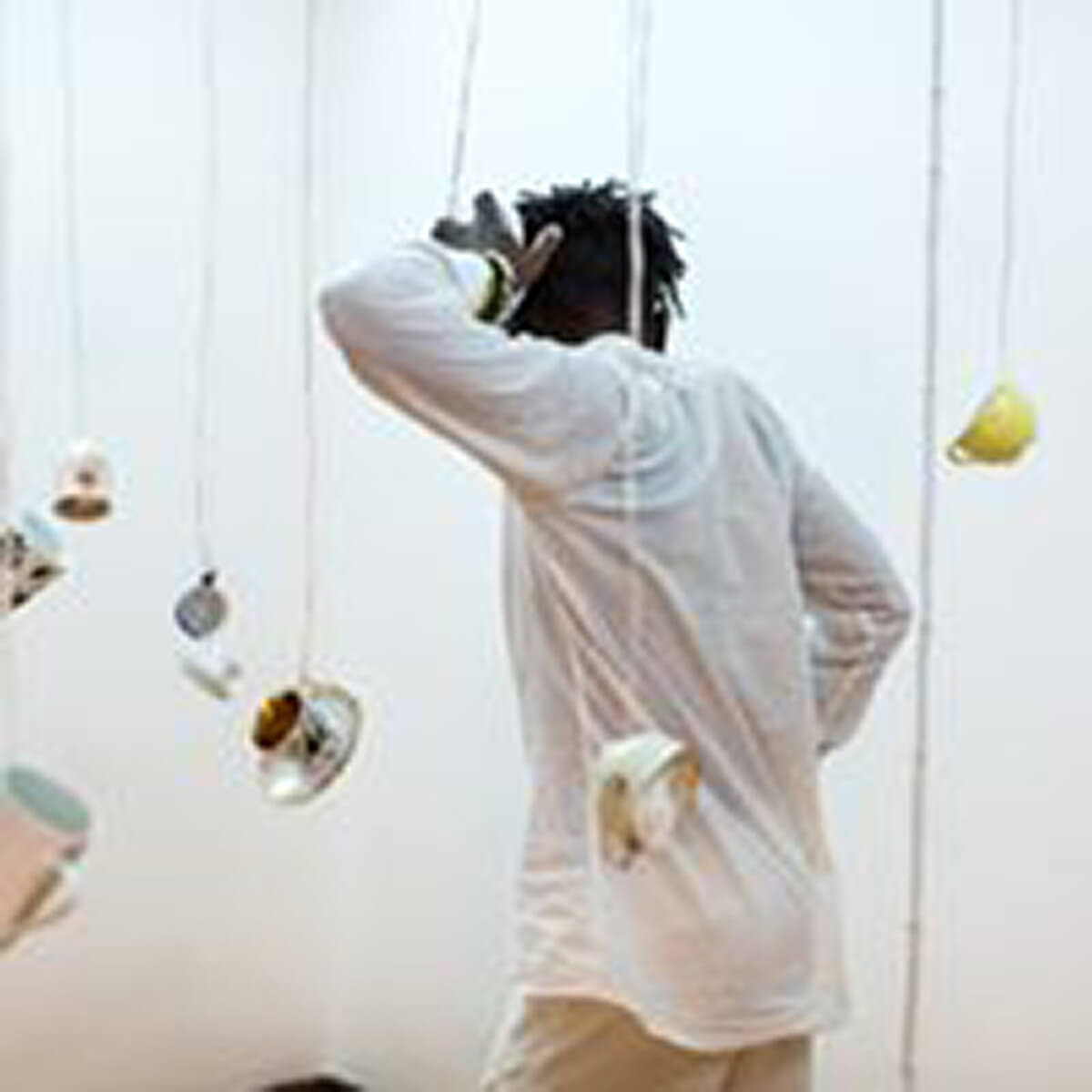Concept:
Commissioned by the Iwalewahaus, Bayreuth, Germany for their exhibition Future Africa: Visions in Time, My Mother’s Mother was born out of Syowia’s research into the role of women in contemporary society, concentrating specifically on the middle classes in Germany and Kenya. Conceived as an entire room installation whose elements fuse women’s voices from both German and Kenyan urban middle-class spaces, this work creates both domestic and public references with its use of different wallpapers, floor laminates, curtains, and ceramic cups.
Delving into the complex historical and contemporary sociological issues surrounding women’s roles in society and gender equality in both countries, the artist highlights uncomfortable truths about the progress and place of women in the 21st Century. In this work, the cups are suspended in the room at varying heights, on strings that on closer inspection are identifiable as sound cables through which the recorded voices of several women recount their experiences, thoughts, and interviews with the artist both in German and in Swahili. Glued to the saucers and placed at various angles, upside down, sliding off their support, mismatched, chipped, and by no means homogeneous, the cups function as the women’s mouthpieces and emphasize diversity, fragility, and strength.
The voices and pieces of texts read out as part of this installation pinpoint the hand me downs of traditional ideology that for centuries has placed women in the kitchen with the main task of being a good wife and mother. These are universal stories that question where the development of feminism has left contemporary European women, who still face issues such as gender pay gap, discrimination at work and are expected both to contribute to the financial well being of the family whilst carrying the burden of being the primary caregiver. They also touch upon the coded contexts of traditional matriarchal structures in African societies, originally subverted by Victorian gender ideals superimposed by colonialism and now increasingly breaking down as the rapidly urbanizing middle classes embrace western ideologies influenced by the consumer market.



















